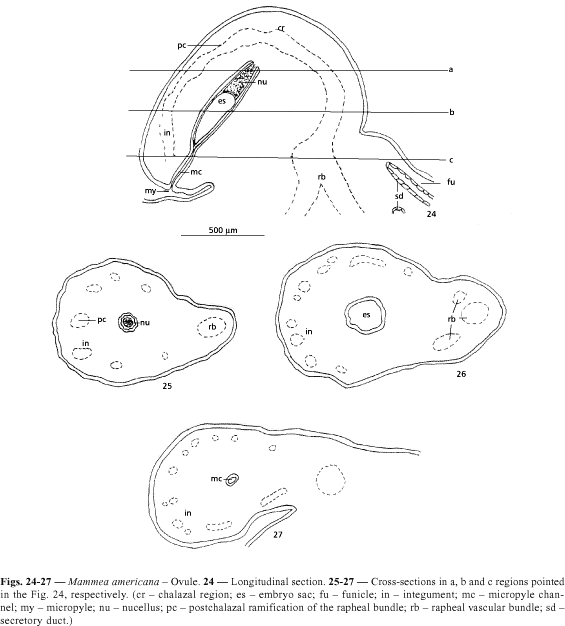Morphological, structural and developmental features of fruits and seeds of Mammea americana L. are here studied, with the purpose to give a proper classification of their fruit and embryo type and to contribute to future taxonomical and ecological studies. The fruit is a berry and the "rind" consists of the exocarp, represented by a periderm with lenticels, and by the parenchymatic mesocarp, with branched secretory ducts and vascular bundles. The edible pulpy is formed by the endocarp, destituted of secretory ducts, and derived from the activity of a ventral meristem, which emerges early in the fruit development. The inner endocarp cell layers undergo a radial elongation and become firmly attached to the testal outer layers. At maturation the endocarp may be released from the rest of the pericarp. The ovules are unitegmic and they turn into unitegmic and exalbuminous seeds. The multiseriate testa consists of thick-walled cells and sclerenchymatous fibers. This last features have carried out to a wrong interpretation that the fruit of this species is a drupe. The embryo is pseudo-conferruminate, with two massive foodstoring cotyledons, rich in starch, firmly attached.
Clusiaceae; fruit; seed; Mammea; anatomy




